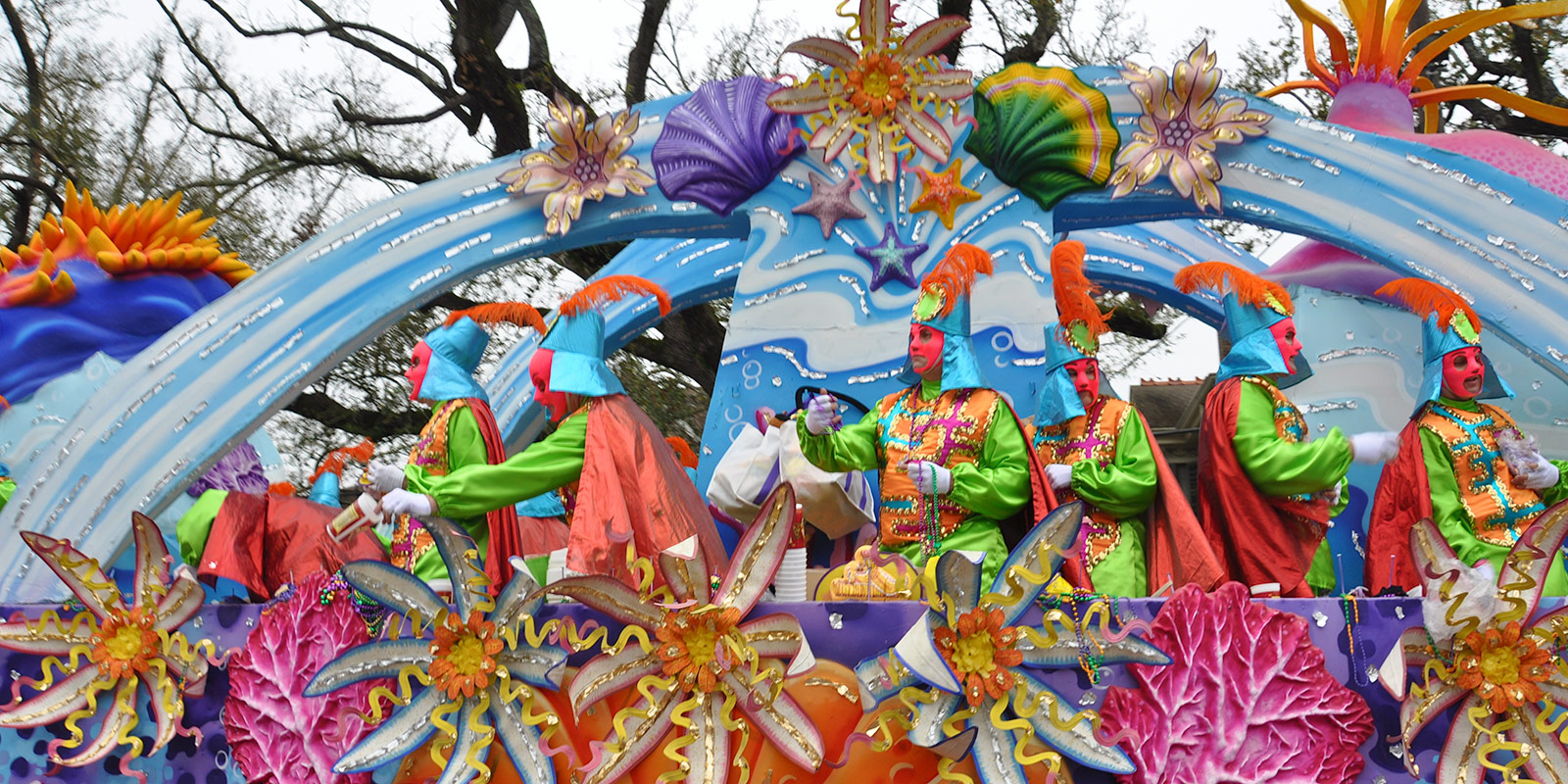Rex: The 150th Anniversary of the School of Design
Since its founding in 1872, Rex has been synonymous with the splendor, artistry and rich tradition of New Orleans Carnival. Everything about its annual pageant — from the magnificent floats to the regal regalia worn by its monarchs, captain and riding lieutenants; from the staging of its ball to the design and production of keepsakes and accoutrements — is done to the highest possible standard.
Collaborating with Stephen W. Hales, historian and archivist of the Rex Organization and author of the new book Rex: 150 Years of the School of Design, the Louisiana State Museum draws on its superlative collection of artifacts to tell the story of Rex, with a particular focus on the costumes of its kings, queens and courtiers. The show will be on view at the Presbytère through December 11, 2022.
The museum, beginning in the 1920s, made a dedicated effort to gather costumes directly from krewe members. Its collection now totals more than 60 royalty and krewe costumes and gowns as well as dozens of sets of rare crown jewels. The exhibition features newly discovered treasures from the krewe’s early years, recently acquired from as far away as Germany and Italy, along with rarely seen artifacts borrowed from private and institutional collections. Among them: an 1873 Rex ducal pin — a crest-like medal that hangs from a multi-colored ribbon — given to Lewis J. Salomon, a financier who reigned over the first Rex parade the year before. Lead curator Wayne Phillips, a specialist in costumes and textiles, has been working on the exhibition for five years.
Rex prides itself on preserving a float-making tradition that pre-dates the Civil War and is unique to New Orleans. A float installed in one of the exhibition galleries by the krewe’s float builder, Royal Artists, demonstrates the techniques and materials used to construct its rolling works of art.
It’s a collaborative process involving designers, painters, builders of armatures for props, sculptors working with papier mâché, and decorators who add vibrant, three-dimensional flowers and gold- and sliver-leaf trim. It all begins with a concept for a theme and illustrations developed around that theme.
Except for seven iconic permanent floats, which include the Boeuf Gras and King’s Float, Rex floats, built atop old wooden chassis with wooden wagon wheels, are created anew every year, with props that have never been seen before. The art form is, appropriately, described as “ephemeral”: artisans basically spend a whole year creating a burst of beauty that the public only gets to see for a few hours on Mardi Gras Day.
The exhibit also explores krewe’s public service legacy, beginning with its founders, who sought to boost economic development in New Orleans following the Civil War. Its kings and queens have long been associated with civic and charitable endeavors.
After Hurricane Katrina, Rex assumed an expanded philanthropic mission. Its Pro Bono Publico Foundation, founded in 2006, has donated over $10 million to New Orleans-area schools and organizations that support teachers and provide education-related services and advocacy.
The Presbytère, located at 751 Chartres Street on Jackson Square, is open Tuesday- Sunday, 9 am-4 pm. Admission is $10 for adults; $8 for students, seniors, and active military; and free for children 6 and under. Tickets can be purchased in advance.
MardiGrasTraditions.com

